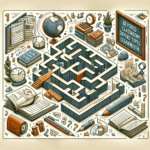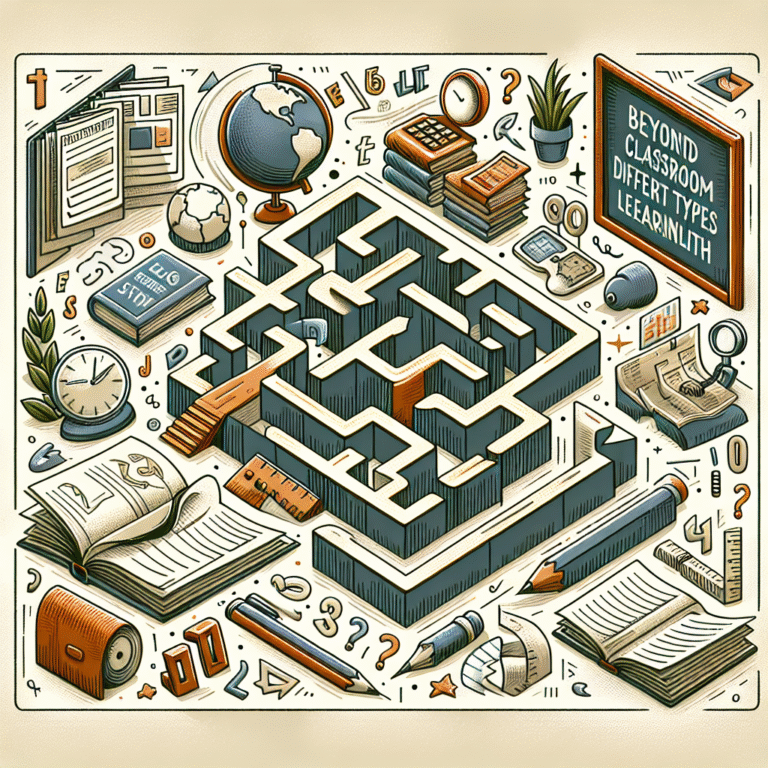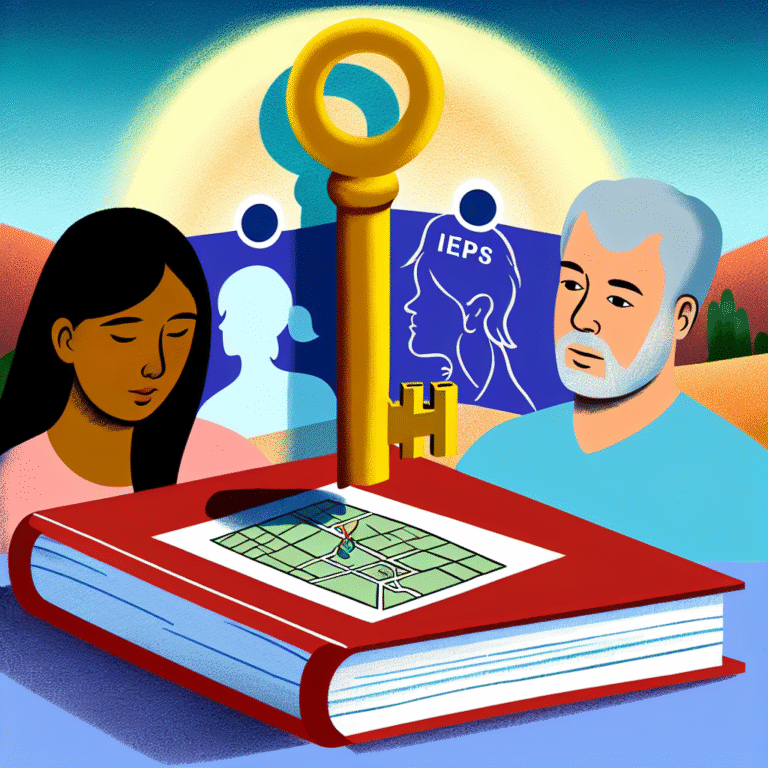
Inside a Traumatized Mind: How Our Past Experiences Shape Who We Are Today—The Essential Guide to Understanding Trauma and Its Impact
Introduction: The Unseen Blueprint of Our Lives
Imagine walking through a beautiful garden, vibrant with colors and blooming flowers. Now, envision that garden surrounded by an imposing fence, obscuring some areas from view. This is a metaphor for the human mind, particularly a traumatized mind. Trauma can serve as that fence, defining the boundaries of our emotions, thoughts, and reactions. The landscape within is exquisite yet complex, shaped by past experiences that whisper to us even in the most unsuspecting moments.
Understanding the landscape of a traumatized mind is not just an academic pursuit; it impacts our daily lives, relationships, and mental health. In this article, titled Inside a Traumatized Mind: How Our Past Experiences Shape Who We Are Today, we will explore how trauma intricately weaves into the fabric of our identity. By illuminating the psychological, emotional, and social ramifications of trauma, we aim to provide insights that empower and educate, helping readers to better understand themselves and others.
The Psychological Foundation of Trauma
To delve deeper into this intricate subject, it’s essential to define trauma and its effects. Trauma arises from experiences that are intensely distressing or disturbing. These experiences may stem from various sources, including but not limited to:
- Abuse: Physical, emotional, or sexual maltreatment can leave deep psychological scars.
- Neglect: Lack of adequate parental support or care during formative years can hinder emotional development.
- Loss: The death of a loved one or significant life changes can trigger profound grief and displacement.
- Accidents and Natural Disasters: Sudden, unexpected events can create lasting stress.
How Trauma Forms Our Responses
When we say "inside a traumatized mind," we refer to how trauma shapes our reactions and interactions with the world. Trauma can manifest emotionally, mentally, and behaviorally.
Emotional Responses: Individuals may experience anxiety, anger, or debilitating sadness. Emotional responses often serve as protective mechanisms, shielding individuals from subsequent pain or distress.
Cognitive Distortions: Traumatized minds may employ negative self-talk or see the world through a pessimistic lens, affecting decision-making and interpersonal relationships.
- Behavioral Patterns: Many find solace in avoidance—whether that means steering clear of certain people, places, or even personal feelings. This avoidance can hinder personal growth and relationships.
Case Study: Childhood Trauma and Adult Relationships
Research shows that unresolved childhood trauma can severely affect adult relationships. Consider the case of Emily, who experienced emotional neglect throughout her childhood. As an adult, she found it difficult to trust her partners in romantic relationships, often sabotaging them out of fear of abandonment. Emily’s past created a lens through which she viewed intimacy as a potential source of pain.
Analysis of Emily’s Case
Emily’s story highlights a fundamental principle: trauma can impact the ability to form healthy relationships. Understanding this connection is crucial in therapy and personal development, as it provides a pathway for healing. The therapeutic process can help individuals like Emily rewrite their narratives, enabling them to build more meaningful connections.
The Science of Trauma: Neurobiology
The Brain on Trauma
The human brain is a fascinating organ, particularly when examining the effects of trauma. Trauma doesn’t merely influence our thoughts; it physically alters our brains. Studies using advanced neuroimaging technology reveal that trauma can affect key areas such as:
The Amygdala: Responsible for processing fear, this area can become hyperactive in response to trauma, heightening anxiety and fear responses.
The Hippocampus: Essential for memory and learning, trauma can lead to a reduction in its size, making it difficult to form new memories or process existing ones.
- The Prefrontal Cortex: Involved in decision-making and impulse control, trauma can hinder its functions, leading to reckless behavior or difficulty in regulating emotions.
Understanding Through Research
Understanding “Inside a Traumatized Mind: How Our Past Experiences Shape Who We Are Today” involves acknowledging the biological underpinnings of our responses. Trauma changes the brain, making it essential for therapeutic interventions to address these changes at both cognitive and physiological levels.
The Ripple Effects of Trauma in Society
Social Implications
Trauma doesn’t exist in a vacuum; it affects families, communities, and societies. A traumatized mind carries its wounds into every social interaction, potentially creating cycles of trauma that pass from one generation to the next.
Virtual Table: Trauma’s Social Impact
| Area Affected | Description |
|---|---|
| Family Dynamics | Patterns of abuse or neglect often repeat, affecting future generations. |
| Community Trust | Widespread trauma can lead to distrust among community members. |
| Mental Health Suicides | Elevated trauma levels correlate with higher instances of mental health crises. |
Case Study: The ACE Study
The Adverse Childhood Experiences (ACE) Study is a pivotal research project exploring the impact of childhood trauma on adult health and behavior. Findings revealed that individuals with a high number of ACEs are at increased risk for several health issues, including heart disease and mental health disorders.
Analysis of ACE Findings
The ACE study underscores the fundamental notion of how our past experiences shape who we become. The data illuminates the long-term impacts of trauma, showcasing an urgent need for early intervention and support services for at-risk populations.
Therapeutic Interventions and Healing
Modalities for Healing Trauma
The path to healing a traumatized mind is varied and deeply personal. Different therapeutic modalities can address trauma effectively:
Cognitive Behavioral Therapy (CBT): This approach helps individuals identify and reframe negative thought patterns stemming from trauma.
EMDR (Eye Movement Desensitization and Reprocessing): A specialized therapy designed to alleviate distress from traumatic memories.
- Mindfulness and Somatic Experiencing: Techniques focused on grounding oneself in the present can help mitigate effects of trauma.
Real-World Application: Success Stories
Consider the story of John, who experienced combat-related trauma. Through EMDR therapy, he was able to process painful memories and regain a sense of control over his life. His progress exemplifies the potential for recovery through appropriate intervention.
Analyzing John’s Journey
John’s case emphasizes the transformative capacity of therapy. By engaging with his traumatic experiences, he was able to alter his relationship with the past, showcasing the core message of “Inside a Traumatized Mind: How Our Past Experiences Shape Who We Are Today.”
Moving Forward: Building Resilience
Cultivating Resilience
Understanding trauma also involves recognizing the capacity for resilience. Resilience isn’t merely about bouncing back; it’s about growth and adaptation in the face of adversity. Building resilience can be approached through various avenues:
Community Support: Engaging in supportive social networks can mitigate feelings of isolation that often accompany trauma.
Healthy Coping Strategies: Implementing techniques such as journaling, meditation, or physical activity can bolster mental health resilience.
- Education and Awareness: Raising awareness about how trauma impacts behavior can foster empathy in communities and reduce stigma.
Case Example: Psychological First Aid in Communities
Implementing community-based programs that offer psychological first aid post-disaster can significantly help individuals cope with trauma. The community’s role in fostering resilience becomes apparent when individuals come together to support one another in the face of shared trauma.
Conclusion: The Legacy of Our Stories
In conclusion, the journey of understanding Inside a Traumatized Mind: How Our Past Experiences Shape Who We Are Today is multidimensional. It entails recognizing the imprint of trauma on our lives while realizing the potential for recovery and resilience.
Our past experiences may influence us, but they do not define us. Healing is possible; communities can come together to support one another, and through understanding, we can pave the way toward a brighter future.
FAQs
1. What is trauma?
Trauma is a psychological and emotional response to an event or series of events that are distressing and overwhelming.
2. How can past trauma affect current relationships?
Unresolved trauma can lead to trust issues, fear of intimacy, and maladaptive behaviors in relationships, making it difficult to develop healthy connections.
3. What are the signs of a traumatized mind?
Signs include anxiety, depression, emotional numbing, avoidance behavior, and difficulties concentrating or remembering.
4. What therapeutic approaches are effective for trauma?
Effective therapies include Cognitive Behavioral Therapy (CBT), EMDR, mindfulness practices, and somatic experiencing—tailored to the individual’s needs.
5. How can I support someone dealing with trauma?
Offer empathy, listen without judgment, educate yourself on trauma, and encourage them to seek professional help while respecting their autonomy.
Understanding “Inside a Traumatized Mind: How Our Past Experiences Shape Who We Are Today” opens pathways to healing not just for individuals, but also for communities built on understanding and support. Together, we can dismantle the fences guarding our gardens, allowing for the beauty of connection and growth.













